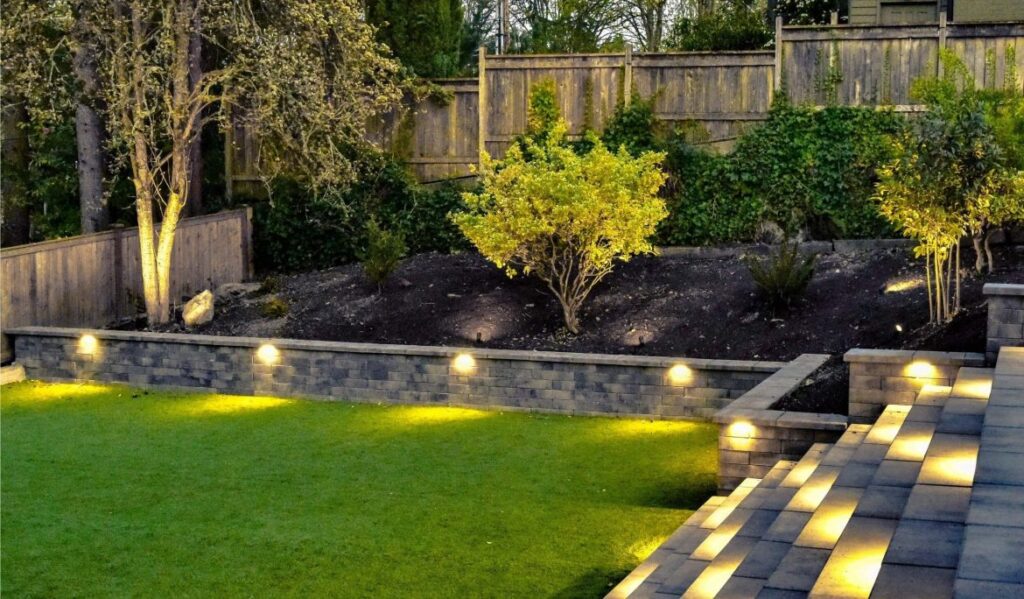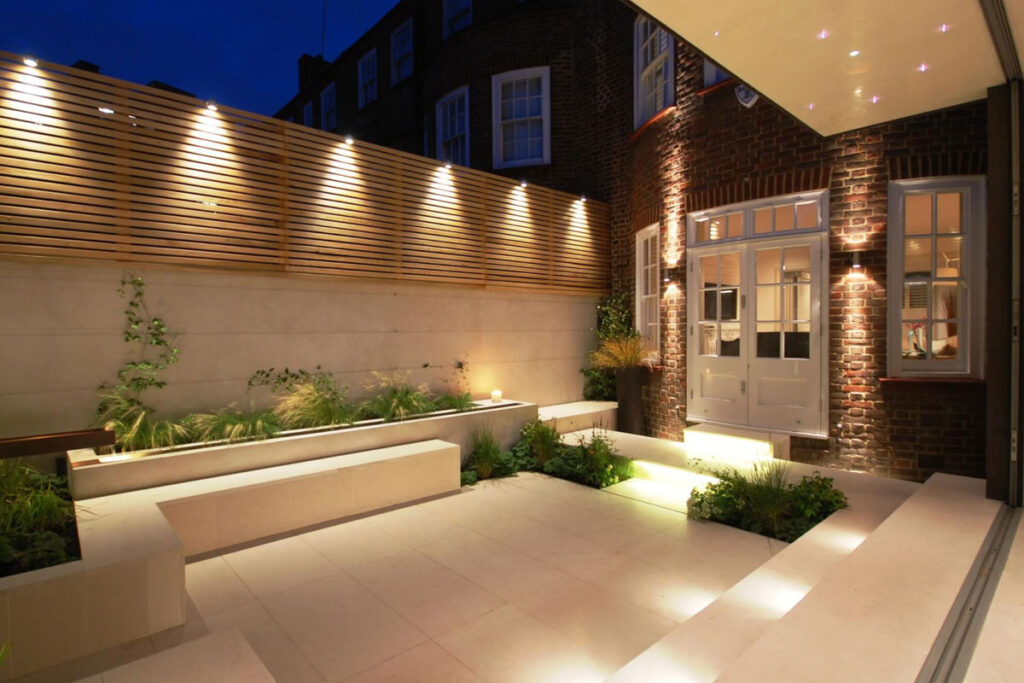Building area lighting plays an important role in creating attractiveness and safety in outdoor spaces. This type of lighting involves using various lights to illuminate paths, facades, gardens, and green spaces. Correct selection of lamps and attention to safety principles in installing and using lights are among the important points in this process. Proper lighting can give a beautiful and pleasant look to the building area. Continue reading the article from Shamim Andisheh Company with us.
Principles of Building Area Lighting
The principles of building area lighting include tips and methods that help improve the appearance and increase the safety of outdoor areas. Here are some important principles of building area lighting:
- Safety and Security: Lighting should ensure that paths and walkways are well illuminated to reduce the risks associated with darkness. This includes lighting paths, stairs, and entry points.
- Aesthetics: Lighting should be designed to highlight the architectural beauty and greenery of the area. Using soft and environment-appropriate lights can create a pleasant look.
- Energy Efficiency: Using LED bulbs and smart light management systems can help reduce energy consumption. Using timers and motion sensors can also help optimize energy use.
- Harmony with the Environment: Lighting should be in harmony with the environment and create a suitable balance between light and shadow. This can help create a calm and pleasant space.
- Attention to Specific Needs: Each part of the area may have specific lighting needs. For example, main paths need stronger light, while decorative areas can be lit with softer lights.
- Use of Durable Equipment: Lighting equipment should be resistant to environmental factors such as water and dust to ensure good performance over time.
- Emphasis on Important Points: Important and prominent points of the area, such as trees, statues, and architectural elements, can be highlighted using appropriate lighting.

Types of Outdoor Lighting
Outdoor lighting can be divided into various types, each creating different effects and functions. Here are some examples of outdoor lighting:
- General Lighting:
- Used for illuminating the entire area and increasing safety.
- Use of pole lights or wall lights.
- Accent Lighting:
- Used for highlighting specific points in the area, such as trees, statues, or architectural features.
- Use of focused lights and spotlights.
- Ambient Lighting:
- Used to create soft and even lighting effects in the outdoor space.
- Use of LED lights and recessed lights.
- Pathway Lighting:
- Used for illuminating paths, walkways, and stairs.
- Use of short pole lights or recessed lights.
- Security Lighting:
- Used to increase security and prevent unauthorized access to the area.
- Use of motion sensor lights and strong lights.
- Decorative Lighting:
- Used to create decorative and beautiful effects in the area.
- Use of colored lights and decorative lights.
- Underwater Lighting:
- Used for illuminating pools, ponds, and fountains.
- Use of underwater lights and waterproof LED lights.
- Interior and Exterior Lighting:
- A combination of interior and exterior lighting to create harmonious and beautiful effects.
- Use of wall lights and pole lights.

Types of Equipment Suitable for Outdoor Building Lighting
For outdoor building lighting, there are various types of equipment that can give a beautiful and functional look to the exterior space. Choosing the right lights and equipment requires a specialist and consultation with an experienced design and lighting expert, such as Shamim Andisheh Company. Here are some examples:
- Pole Lights:
- Features: Various heights, suitable for paths and walkways, provide even and soft lighting.
- Uses: Illuminating paths, entrances, and gardens.
- Recessed Lights:
- Features: Installed in the ground, produce direct and focused light, resistant to environmental factors.
- Uses: Lighting paths, building facades, trees, and statues.
- Wall Lights:
- Features: Mounted on walls, provide direct or diffused light, resistant to weather conditions.
- Uses: Illuminating facades, entrances, and boundary walls.
- Projector Lights:
- Features: Produce strong and focused light, adjustable light direction.
- Uses: Highlighting architectural features, large trees, and key elements of the area.
- Motion Sensor Lights:
- Features: Turn on when motion is detected, save energy, enhance security.
- Uses: Security lighting for paths and entrances.
- Underwater Lights:
- Features: Waterproof, produce various and beautiful lights, installed underwater.
- Uses: Illuminating pools, ponds, and fountains.
- String LED Lights:
- Features: Flexible, low energy consumption, long lifespan.
- Uses: Decorating gardens, open spaces, and wrapping around trees.
- Solar Lights:
- Features: Use solar energy, no need for electrical wiring, save energy.
- Uses: Illuminating paths, gardens, and remote areas.

Common Mistakes to Avoid in Outdoor Lighting
In outdoor building lighting, there are many mistakes that can reduce the attractiveness and efficiency of the lighting in the environment. Pay attention to the following points and try to avoid these mistakes to achieve the best lighting:
- Using Too Much Light: Using too many lights and strong lighting can cause glare and create undesirable lighting. It’s better to use soft and balanced lighting.
- Ignoring Safety: Not paying attention to safety in installing and using lights can lead to accidents and problems like electric shocks. Using safe and standard equipment and following safety guidelines is essential.
- Improper Path Lighting: Not properly lighting paths and walkways can increase the risks associated with darkness. Using pole lights or recessed lights for illuminating paths is recommended.
- Using Inappropriate Equipment: Using unsuitable lights and bulbs for the outdoor space can cause quick damage and frequent replacements. Using equipment that is resistant to environmental factors like water and dust is necessary.
- Incorrect Light Adjustment: Incorrectly adjusting light intensity can create unpleasant shadows and undesirable lighting. Using light intensity control systems can help improve lighting quality.
- Neglecting Timing: Not using timers and motion sensors can lead to excessive energy consumption. Using smart light management systems can help optimize energy consumption.
- Lack of Harmony with the Environment: Lighting should be in harmony with the environment and create a suitable balance between light and shadow. Using different lights for creating diverse and attractive visual effects is useful.
- Lighting Unnecessary Areas: Lighting areas that don’t need it can waste energy and reduce the attractiveness of the environment. Focus on lighting important and prominent points of the area.


 English
English العربية
العربية

















